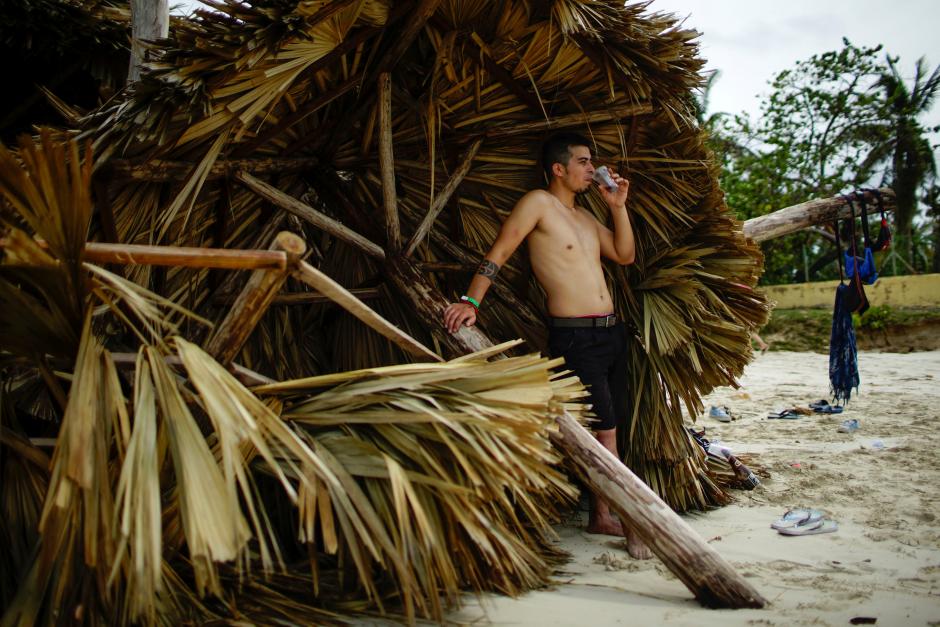In the wake of Hurricane Irma, foreign tourists partied in the coastal resort of Varadero and some Cubans swam in the flooded streets of central Havana, both glad that the deadly storm’s damage to the island of 11 million people had not been worse.
British visitor Josephine Breslin, 49, spent the night on an inflatable bed in a hotel bathroom when Irma’s 120 mph (195 km) winds walloped Cuba’s top beach destination, but after helping sweep up on Sunday morning, she felt ready to start relaxing.
“I think the atmosphere now is relief, knowing it is past and the building is still there and everyone is OK,” said the British woman, wearing a colorful pareo over her swimsuit.
“You can feel people are settling down, the winds are going, the sun is coming out, its business as usual, Cuban rum – yes please!” she said.
Irma was packing 160 mph (260 kph) winds when it made landfall in Cuba, the first storm of that power to reach the island since 1932, and it caused major damage to tourist infrastructure including an international airport on the sandy keys popular with Europeans and Canadians.
It tore off roofs and downed electricity poles throughout the country before turning northwards and ploughing through Florida on Sunday. But even with the power out across most of the country of 11.2 million people, the damage to inland Cuba appeared less than devastation wrought on smaller Caribbean islands.
Winds had slowed a little by the time Irma reached Varadero.
The storm, which killed at least 28 people in the Caribbean and at least one man in Florida, did not lead to reported fatalities in Cuba, which carried out a major evacuation effort prior to the storm.
Havana was spared a direct hit but locals in the poor central district of the colonial city close to the seafront were dealing with waterlogged homes and possessions after 36 foot (11 meter) waves breached the city’s curving sea wall, turning roads into canals.
Some let off steam on Sunday by diving into deeply flooded streets, paddling on wooden boards, or wading to stores for rum through the waist-deep water.
In the Barcelo hotel, Breslin was full of praise for the Cubans who evacuated them on buses along with thousands of others from the keys before Irma, and for the hotel staff who brought sandwiches to her room during the hurricane.
Earlier in the day, the mainly British guests on inclusive package tours with operator Thomas Cook had cleaned up the pool, put sunbeds back in their place and helped workers clear away the fallen trees and branches, everyone mucking in.
In the afternoon, guests milled around the lobby area, drinking from plastic cups, where the reggaeton summer hit Despacito blasted out of loudspeakers and hotel staff geared up to provide an evening of entertainment including salsa dancing.
“We put the music on to bring stress levels down and so the clients feel better,” said Juan Carlos Varcas, 30, a Cuban salsa teacher at the hotel.
Another British tourist, Dave Kelsey, said he was winding down after spending part of the night huddled in a bathtub as winds howled through the hotel, flinging sunbeds far away, tearing up palm trees and flooding rooms.
After a few drinks, Kelsey was horsing around with a friend, both wearing random items of women’s clothing and about to jump into the swimming pool. Other guests egged them on.
While it will take much of Cuba’s tourism industry weeks, if not months to recover from the hurricane, guests at the Barcelo said they would not be deterred from returning to the Caribbean’s largest island.
“Don’t get me wrong, my children don’t want me to come back – they have been worried sick,” said Breslin, who has visited Cuba each of the past four years. “But I will come back to Cuba … because the Cuban people are lovely.”






